Share
Interactive videos can be your silver bullet in crowded retail markets where you’re up against fierce competition. These videos deliver immersive shopping experiences to convert casual browsers into high-intent shoppers.
But here’s the kicker: while retail businesses know the ROI of interactive videos, they don’t always know the best ways to leverage them.
Wondering how to align these videos with your brand? How do you drive conversions and engage shoppers? Or how to track performance and improve the output?
If you’ve been searching for answers to these questions, you can close all the hundreds of search tabs.
This exhaustive guide will answer the 14 most commonly asked questions about interactive videos for retail businesses—from choosing the right touchpoints to following all accessibility best practices.
Top 14 interactive video questions with our answers
Interactive videos include some elements for viewers to interact with your content. These can be hotspots, quizzes, forms, or something similar. Unlike normal videos, where viewers passively consume content, interactive content can hold their attention for longer and nudge them to buy a product.
Let’s break down the 14 most frequently asked questions about interactive videos:
1. How can I leverage interactive video for brand enhancement?
Building a strong brand identity is the key to earning shoppers’ trust and creating a community of engaged customers. Interactive videos can supplement your efforts to develop a positive brand perception and influence how people think + feel about your products.
Here’s how you can use interactive videos for brand enhancement to create a more memorable image:
-
Product videos: Bring your products to life with 360-degree videos showing each product from different angles. You can add interactive elements to highlight benefits and product specifications.
-
Shoppable videos: Create shoppable videos for your online store and social media to let users learn more about your products and make a purchase instantly. You can also run ads or embed these videos on different landing pages to educate and engage shoppers.
-
How-to tutorials: Use interactive videos to show potential customers how to use your products. Instead of simply telling them to follow some steps, give them a hands-on understanding of your products.
Here’s the perfect example by Ava Estell—they embedded a shoppable video to show a quick tutorial and give users a one-click checkout experience to buy the product.

-
Interactive quizzes: Engage shoppers at different touchpoints and collect their details for your lead database with video quizzes. With these quizzes, you can help them make an informed purchase decision and collect insights to run retargeting ads.
-
Store tours: Give potential customers a glimpse of your store or behind-the-scenes operations with interactive videos. You can humanize your brand and add more credibility to your name with such videos.
Interactive videos can create a more exciting shopping experience and give shoppers something unique to remember your brand.
2. How can I enhance user engagement and conversion rates with interactive video?
Besides improving your brand perception, interactive videos can engage potential customers at every step of their buying journey and nudge them to a confident purchase decision.
Retailers can create videos tailored to specific buyer personas and add custom CTAs to appeal to these buyers. Each video can target one persona’s pain points and present a solution. This messaging can stand out in a sea of generic marketing campaigns and resonate well with your audience.
Since each video is designed for a particular persona, shoppers would feel more connected to your brand. The result? Higher engagement and buying intent.
On top of maximizing engagement, you can also collect a wealth of customer data from interactive videos to further improve your marketing strategy.
Ideally, you should look for metrics like on-site engagement, direct video sales, average order value, watch time, etc. Here's a glimpse of the detailed analytics dashboard you get on a platform like Videowise to track your performance in real-time:
.png?width=2000&height=1757&name=image%20(8).png)
3. How can I integrate interactive video across retail touchpoints?
If you think shoppers buy only through online channels, here's a kicker: 59% of consumers prefer visiting a physical store to see and touch products before buying online. Even when shopping online, buyers juggle between multiple channels before making a purchase. Here’s what the research indicates:
.png?width=2000&height=1203&name=image%20(9).png)
That’s why you have to distribute your interactive videos across different touchpoints to deliver an omnichannel customer experience. Here are a few key channels to consider:
-
Your online storefront and other retail marketplaces like Amazon, Etsy, etc.
-
In-store display in your physical kiosk or a brick-and-mortar store
-
Social media platforms and email marketing campaigns
-
Customer support pages to answer common questions
-
Events, pop-up shops, and product launches
Displaying interactive videos across these touchpoints can give potential customers a consistent brand experience and enhance brand recall.
4. How can I measure ROI and demonstrate the impact of my interactive video strategies?
Measuring the performance of your interactive videos is crucial to quantifying the impact of your video marketing efforts. You can also identify opportunities to optimize your conversion funnel and increase lead-generation ROI. Plus, this analysis will also show how shoppers interact with your content.
Follow these tactics to measure the impact of your interactive video strategy:
-
Monetary ROI: Track the direct revenue generated from interactive videos. You can consider direct sales, upsells, or other revenue opportunities you won with these videos.
-
A/B testing: You can also run A/B tests to assess the impact of interactive videos. Compare a standard video with an interactive one to compare engagement and conversion.
-
Performance benchmarking: Compare and contrast your campaign’s performance with other marketing campaigns you’ve executed. The KPIs will reflect if your campaign was a hit or a flop.
-
Customer lifetime value: Calculate the long-term value of customers coming from interactive videos. This can be an ongoing metric to assess the ROI of loyal customers acquired through this strategy.
For example, a unique brand like Artsabers leveraged Videowise’s advanced analytics dashboard to quantify the impact of their interactive video strategy.
They witnessed a 28% increase in engagement among website visitors. They also calculated their average watch time as 3m 17s. Most importantly, they attributed additional revenue from video orders to over $1M.
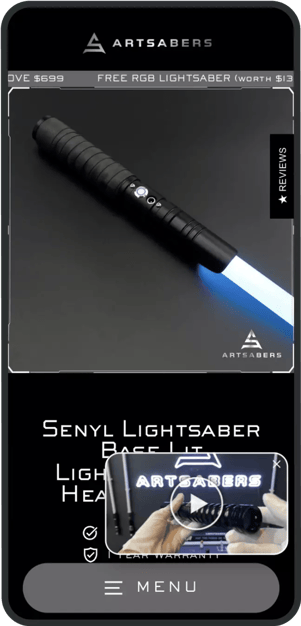
5. How do retail brands strategize with video to stay competitive in the digital retail landscape?
The retail market is more competitive than ever before. You can leverage interactive videos to gain an edge over your competitors, build a thriving community of customers, and establish your brand as an industry leader.
Forward-thinking retail brands integrate video into their shopping experience to give potential customers a 360-degree look at their products. You can do this by embedding shoppable product videos on all product pages on your website.
That’s exactly how Dr. Dennis Gross’s skincare business achieved a 7% engagement rate for website visitors and generated orders/subscriptions worth $50,000. The brand used Videowise’s bulk embedding capability to add shoppable videos to over 150 product pages; the results speak for themselves!

You can also stand out by converting user-generated content into interactive videos. Embed these on your online store to build social proof and show potential customers how to use your products.
Here's a perfect example of how Eczema Honey does it. The skincare brand converted different user-generated review videos into a shoppable format and embedded them across all product pages.
So, new shoppers can get genuine reviews and learn how to use the product simultaneously!
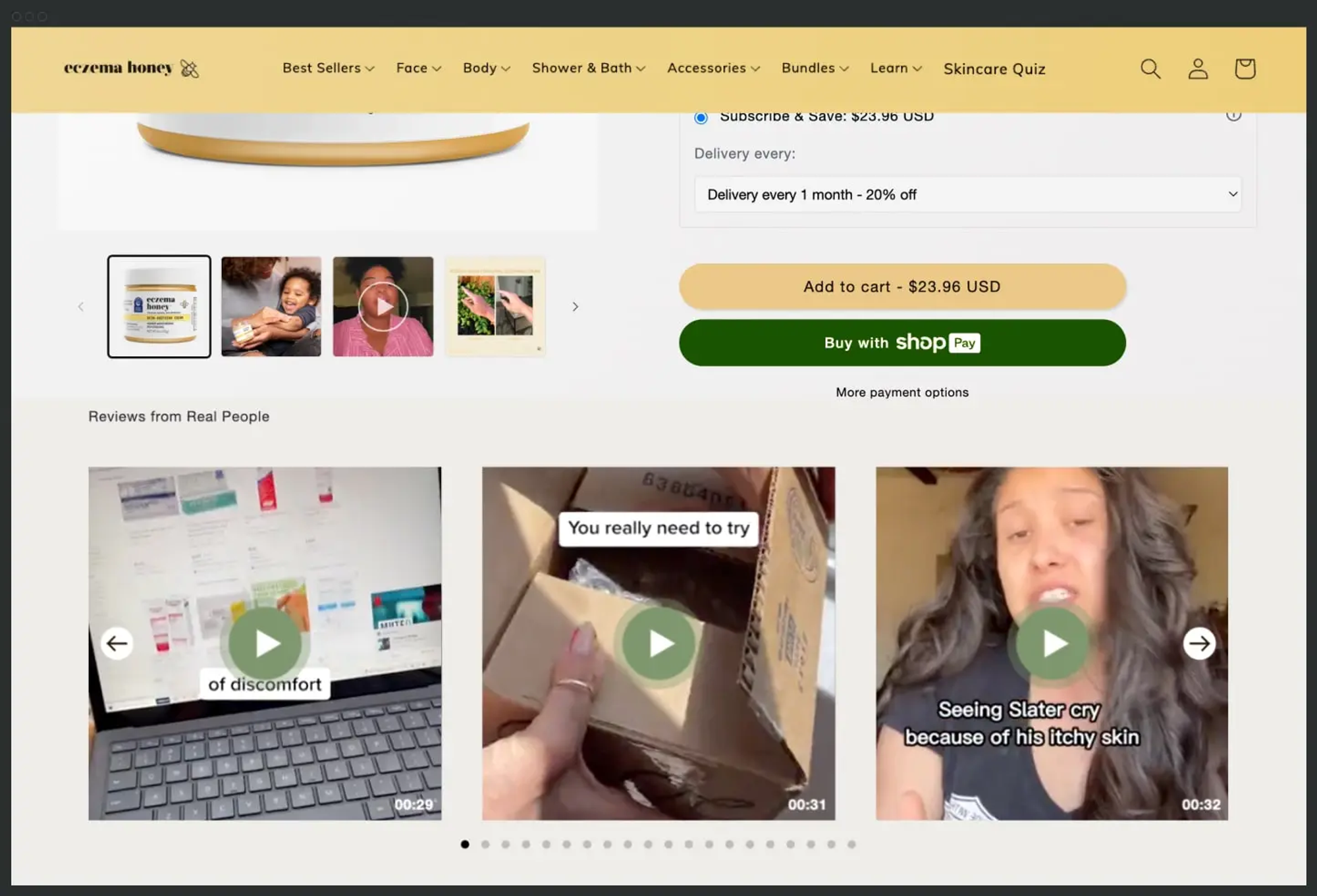
Besides these two tactics, you can also create interactive videos in the style of "Choose Your Own Adventure." Create branched videos where users can go down a different storyline based on their choices.
6. How can I create personalized interactive video experiences for my customers?
Personalization is more than a buzzword for today’s shoppers. You can truly embrace personalization in your interactive video campaign with these best practices:
-
Implement geo-targeting: Show customized videos based on viewers’ location. You can show content in the local language or show videos based on the weather, topography, etc.
-
Create multiple paths: Design different branches in a video to let users see only the most relevant content for their needs.
-
Add interactive layers: Include different interactive elements within a video to let viewers take different actions, like reading reviews, learning more product specifications, checking options, etc.
-
Use dynamic video rendering: Use tools to dynamically show videos based on viewers' browsing behavior and actions on your store.
7. What are the most effective interactive video formats for retail marketing?
Here are the formats you can experiment with to create interactive videos:
-
Hotspots: Add clickable points in your video where users can click and get more information about a product.
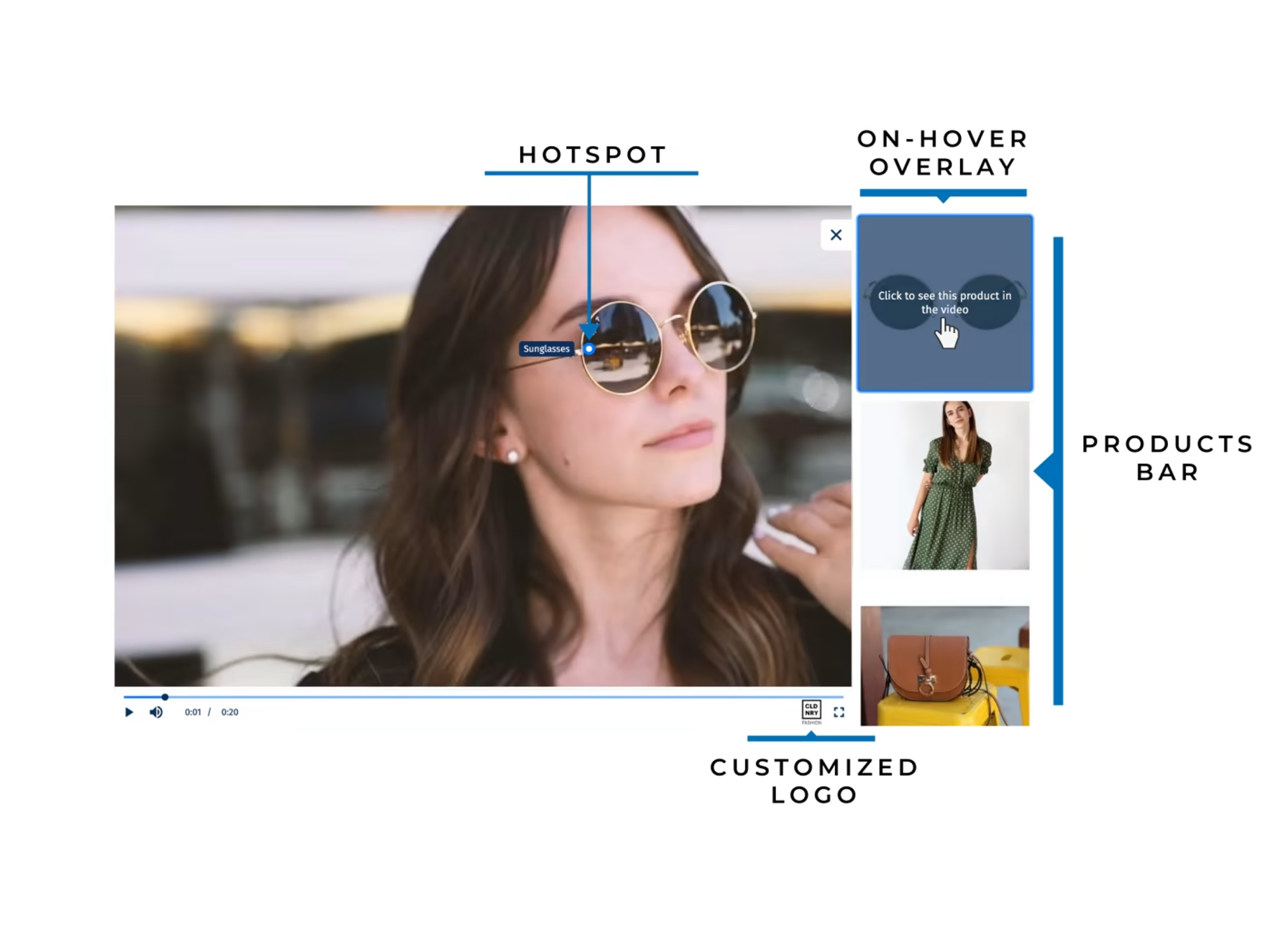
-
Gamified videos: Create a video quiz where users get reward points for every correct answer, encouraging them to learn more about your brand or products.
-
Shoppable videos: Add an option to instantly get all the details about your product and check out in a click. Here's an example of a shoppable video:
-
360-degree videos: Offer a panoramic view of your product where viewers can see your products from different angles.
-
Branching storylines: Convert a single video into multiple branches to let viewers explore different options available within a product. Here's how video branching can work:

-
Augmented reality try-ons: Let shoppers try on products with a dynamic video to get a sense of how products would look on them. Here's an example by Farfetch:
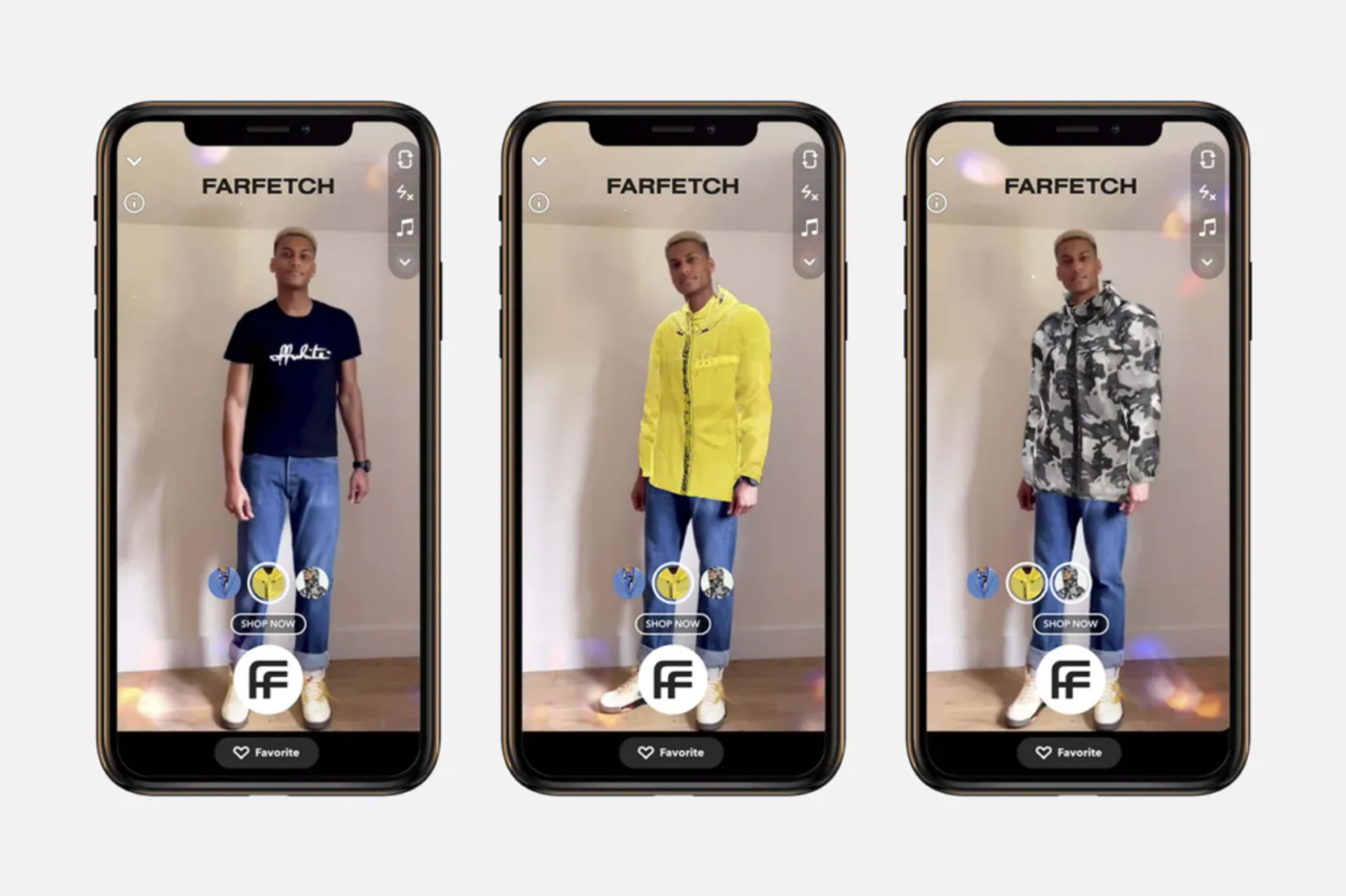
8. How can I leverage user-generated content within interactive video?
86% of consumers value authenticity in content when buying from a brand, and 60% consider user-generated content the most authentic type of content.
You can maximize the ROI of user-generated content by featuring them in your interactive videos. For example, a product video can include clickable hotspots for:
-
Checking out product variations
-
Reading authentic customer endorsements
You can also create videos around individual customer stories and use clips from UGC to make your videos more impactful. This user-driven storytelling can become more relatable to a segment of your target shoppers and encourage them to buy from you.
What's more, you can host social media contests asking customers to review your products, and you'll feature them on your website. This can bring you more content to work with!
Brands like Apolla have been using UGC videos in the shoppable format. Each product page shows a collection of videos where customers candidly share their reviews of different Apolla products. This builds instant credibility for the brand and allows shoppers to buy with a click.
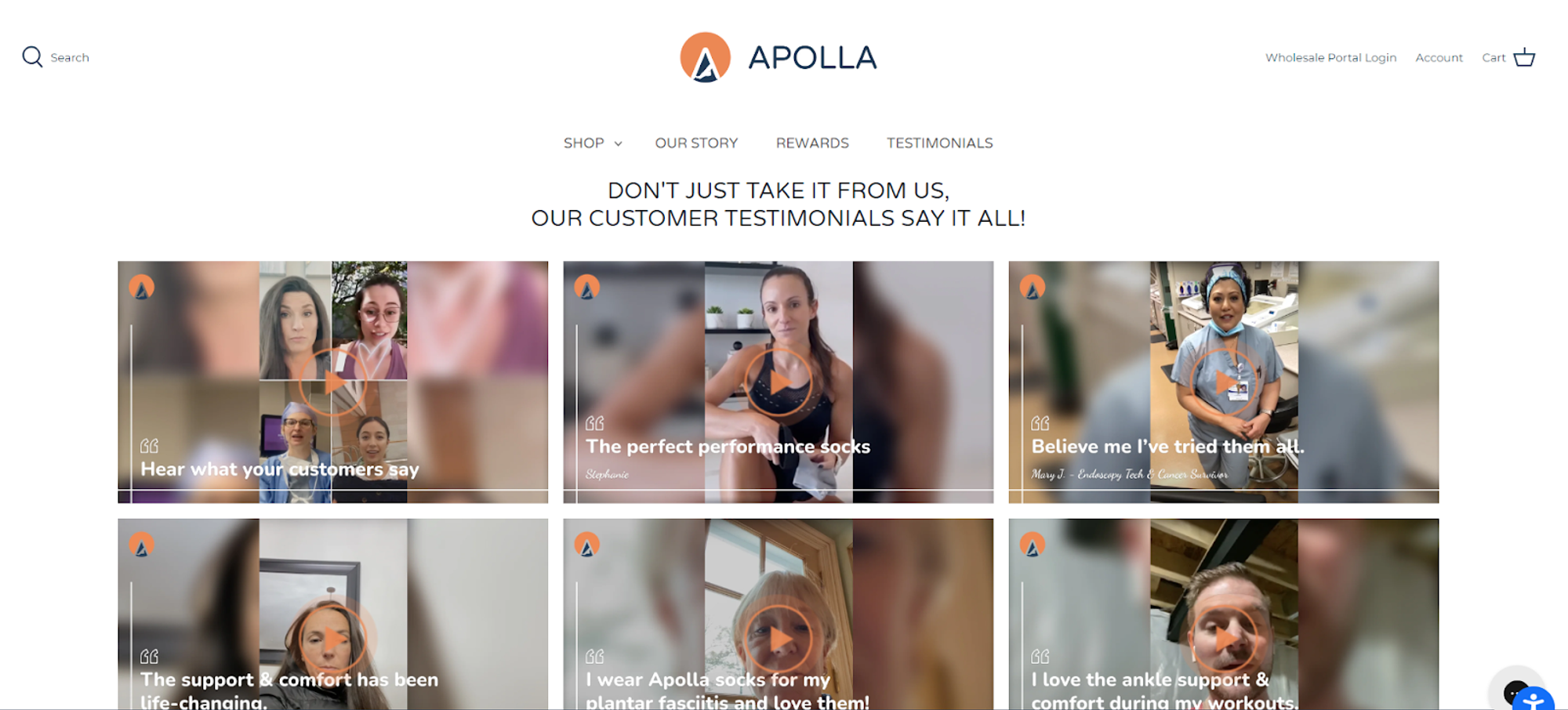
9. How can I best ensure accessibility and inclusivity in interactive videos?
You have to follow a few best practices to make your interactive videos accessible and inclusive for a global audience.
Even if you don’t sell worldwide, creating accessible + inclusive content can create a positive reputation for your brand and drive conversions.
Here are some tips to increase accessibility for your videos:
-
Add closed captions for viewers with hearing impairments
-
Include subtitles in multiple languages to increase reach among a global audience
-
Let users navigate interactive elements from the keyboard for mobility-impaired viewers
-
Use a high-contrast color palette to make every interactive element prominently visible
-
Add alt text to your video and all clickable elements
You can also enhance inclusivity in your video by using inclusive language and embracing diverse representation. If you’re focusing on specific markets, test with buyers in those regions to remove any culturally inappropriate information or references.
10. How can I analyze the data collected from interactive video to refine my retail strategies?
Interactive video platforms like Videowise offer built-in analytics to give you granular visibility into viewer behavior and revenue generation. You get a personalized analytics dashboard showing key metrics like views, watch time, direct sales, and more.
You can analyze these data-driven insights to:
-
Understand and visualize the customer journey from discovery to purchase
-
Assess user behavior and identify key engagement points + drop-offs
-
Accurately attribute revenue to video content
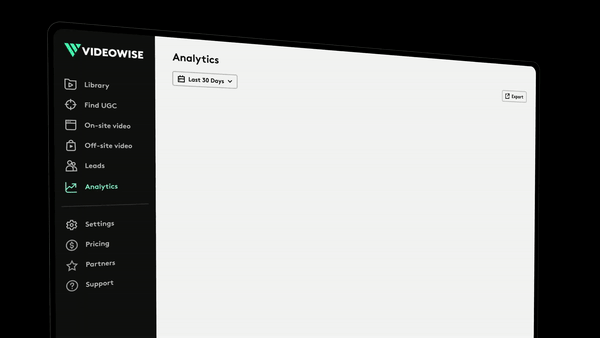
Besides these analytics, you can also use heat mapping tools like Hotjar to understand how viewers interacted with your videos and where their interest levels peaked or dropped.
Once you’ve collected detailed insights on user behavior, work with your marketing team to optimize your content. You can shorten your videos’ length to minimize drop-offs, restructure the interactive elements, and update these videos based on user interactions.
11. What are the best practices for optimizing interactive video SEO?
Follow these tried-and-tested best practices to maximize your video’s discoverability on search engines:
-
Video titles: Make each video title descriptive, keyword-optimized, and relevant to its key message.
-
Descriptions: Write detailed and compelling descriptions, including the right keywords to share context about the video.
-
Transcripts: Let search engines understand the message of your video with accurate transcripts of the audio (if any).
-
Inline embeds: Use inline embeds to help search engines crawl and index your videos for organic rankings.
-
Backlinks: Add backlinks to your videos from reputable, high-authority websites.
12. What compliance and legal considerations should I be aware of when using interactive video in retail?
Launching an interactive video campaign isn’t just about coming up with the most compelling script or adding a few clickable hotspots. You have to pay equal attention to legal regulations and meet all compliance requirements.
Here are a few major considerations for interactive videos in retail:
-
Copyright and intellectual property: Make sure you have the right to use the music, visual elements, and other media in your video. In case you're using UGC videos, you have to get written permission from the original creators.
-
Accessibility guidelines: You have to comply with the guidelines listed under the Americans with Disabilities Act (ADA) to launch your videos in the US market. Besides, you should also consider the Web Content Accessibility Guidelines (WCAG) to create accessible content.
-
Data protection laws: If you include a lead capture form in your interactive videos, you have to meet the guidelines listed under the General Data Protection Regulation (GDPR) and the California Consumer Privacy Act (CCPA).
-
Age restrictions: In case your videos are not suitable for children, you should be aware of the Children's Online Privacy Protection Act (COPPA) in the US market.
Put simply, creating and distributing interactive videos online involves many moving parts. Don’t forget to tackle all legal considerations before launching your campaigns.
13. How can I integrate interactive video with my CRM system for enhanced customer relationships?
Your CRM includes granular data about every customer and potential customer. You can leverage these detailed insights to leverage interactive videos more meaningfully.
For example, if your CRM data indicates a prospective buyer recently browsed a product page but didn’t buy the product, you can show them retargeting ads with shoppable videos of that specific product. This data-driven personalization can deliver your videos to the right people at the right time.
You can also set triggers to show your videos to particular customers based on their actions or milestones. For example, when a customer places X number of orders, you can show them videos about your loyalty program.
14. How can I effectively manage interactive video content at scale?
Interactive videos aren’t a one-and-done strategy. You have to constantly iterate and optimize your content to better meet buyer expectations and drive conversions. This is where most retailers drop the ball.
Managing a large repository of videos can be a nightmare. You have to juggle multiple concerns like storage space, collaborative access, tracking different versions, easy search capabilities, etc. As more videos pile up in your library, finding the right video can become even more challenging.
That’s why you need a system to maintain a well-organized library of interactive videos. Here’s a handy checklist for creating such a system:
-
Use a cloud-based storage solution with a fast and reliable video delivery
-
Implement a tagging system to categorize videos and organize them properly
-
Look for platforms with easy versioning to track all edits and modifications
-
Record the monetization analytics for each video to compare performance
Successful brands like Nutr use Videowise to store, manage, and track all their videos. Nutr imported reels from Instagram and converted them into shoppable video embeds across their website.
They also uploaded their own videos in their Videowise repository to keep all their content in a single place with all the features in our checklist.
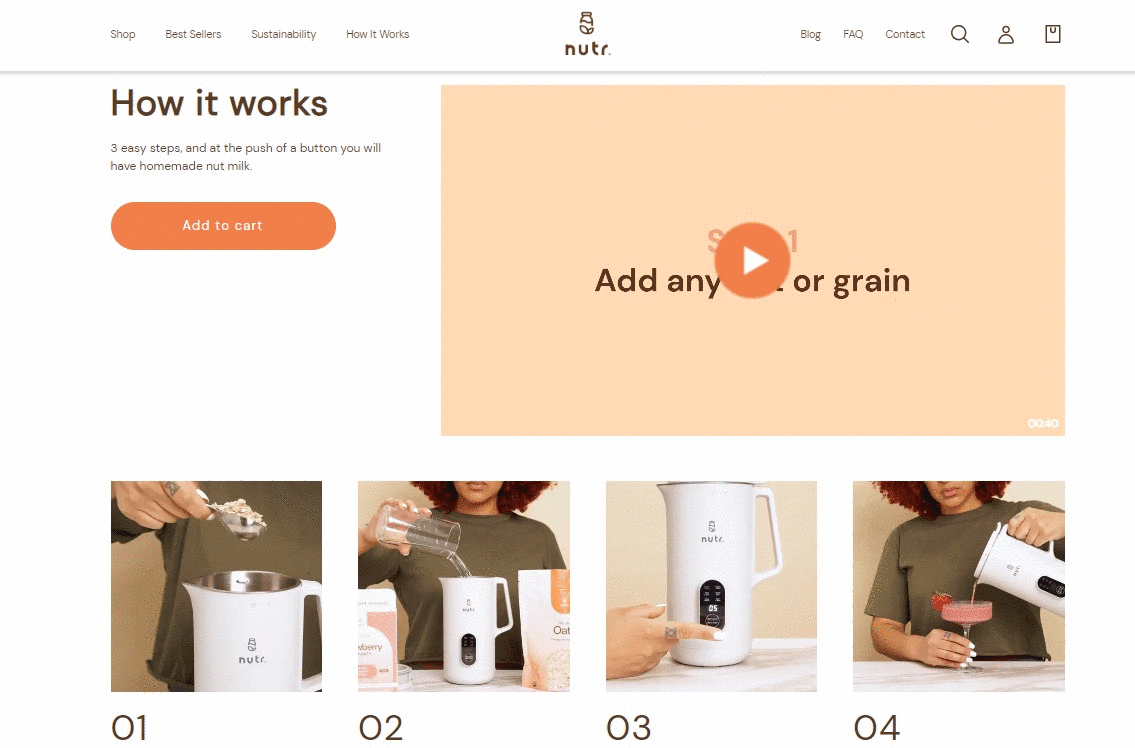
All your questions were answered on interactive videos for retail
Whether you’re planning a big product launch or aiming to ramp up your website sales, interactive videos can be a game-changer for you.
Done right, a good interactive video strategy can quickly take shoppers from a stage of awareness to purchase and loyalty. On top of boosting your bottom line, interactive videos can also create a positive brand reputation and cultivate a hyper-engaged community of shoppers.
Ready to leverage the power of interactive videos? Get started with a personalized demo call to understand how Videowise can fit the bill and supercharge your campaign from start to finish. Book a demo today!
Share

.jpg)


.jpg?width=420&height=420&name=live%20shopping%20top%205%20fashion%20(1).jpg)